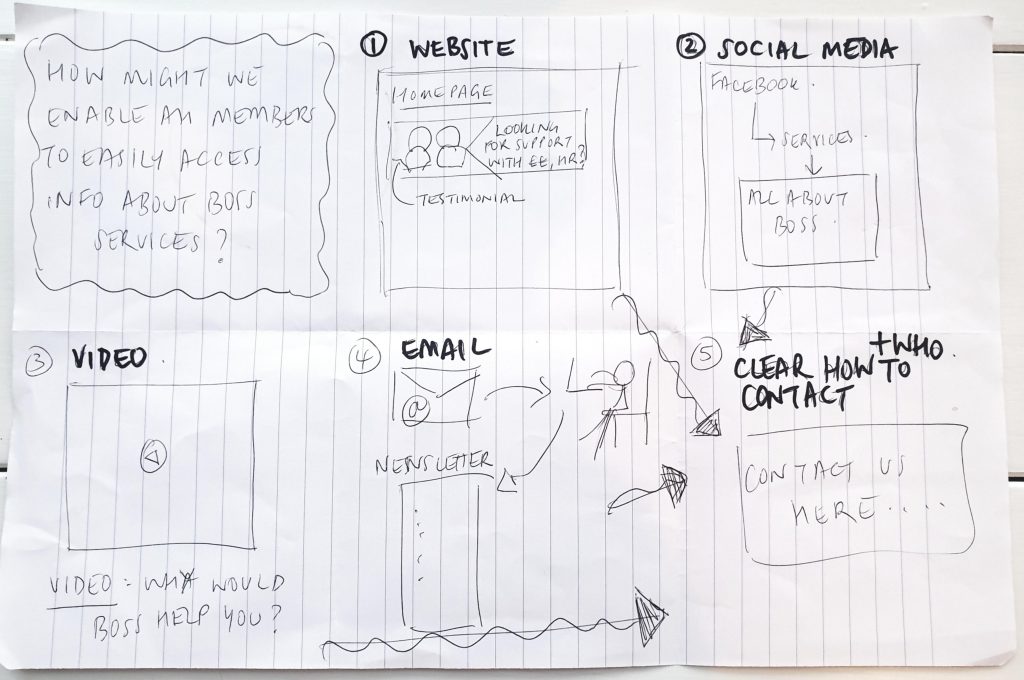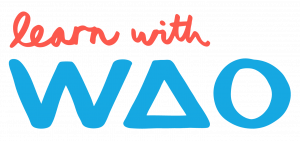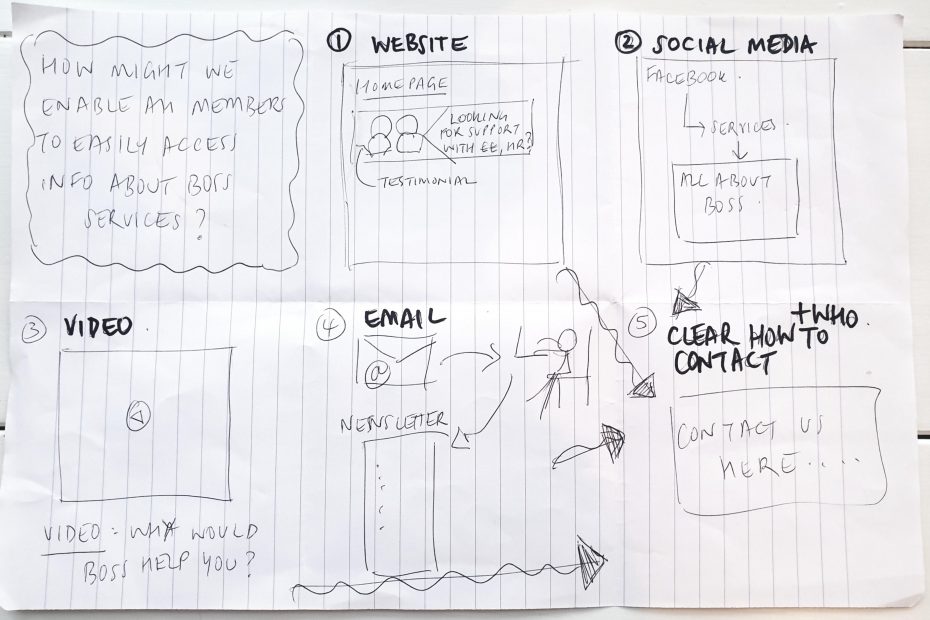We’re big fans of what some call Crazy Eights, an approach core to design sprints when developing new products and services. However, we’re not huge fans of the name (‘crazy’ isn’t very neurodiverse-friendly) and coming up with eight ideas is hard. So we’ve coined the term Fast 5’s to refer to this slight tweak on the classic activity.
The purpose of this approach is to allow a group of people to quickly generate ideas in a short space of time. These can then be shared and discussed. Nobody needs to be an expert at drawing — you haven’t got time!
Target group: project team, workshop group
Time: 10 minutes + discussion/evaluation time
Material: Pen/Pencil, Paper (pre-folded), Countdown timer, optional: sticky notes
Goals: develop new ideas without overthinking

The above image shows the output from a Fast 5’s activity. To run it, everyone needs a sheet of paper and a pen/pencil. The facilitator needs something to time each section, such as a stopwatch. Pro tip: type “countdown timer” into your favourite search engine.
- Decide on a focus question — perhaps use a How Might We…? format for this, with the idea that everyone has the same focus question
- Fold your paper into six squares — potentially the trickiest part, just fold in half longways, and into thirds the other way!
- Write down the question — everyone writes the focus question into the top left box
- Explain what to do — participants have one minute to write, draw, or sketch an idea into the box to the right hand side of the focus question box
- Rinse and repeat — once the first minute is up, encourage participants to move onto the next box (with no break in between)
- Share back — if you’re doing this in person, participants can stick these up on the wall and everyone gathers around for them to explain each box. If you’re doing it online, you can get them to hold it up to the webcam and/or put it into an online space such as Jamboard, Miro, or Mural.
It’s worth showing an example to participants such as the one above before they begin. Explain that they can draw people doing things, a process, sketch what a website or an app would look like — anything that helps them communicate an idea to others! If you’ve got a large group, or are particularly short on time, you can get them to verbalise their ‘top two’ ideas with the group.
From here, there are a number of ways forward. Again, if you’re doing this in person, you can use sticky notes for people to vote on their favourite idea(s). Miro and Mural have similar functionality if doing this online. What’s particularly important, though, is the conversation that happens, and the links between different people’s ideas that are generated.

